It looks like you're using an Ad Blocker.
Please white-list or disable AboveTopSecret.com in your ad-blocking tool.
Thank you.
Some features of ATS will be disabled while you continue to use an ad-blocker.
share:
First off: yes, this has been mentioned in an early episode of AA. But it's still a mystery, one that is unsolved up to this day. For those who think
this has already been debunked, please take a closer look at the ancient granite slab shown below (note the curved cut at the top). It can be
found at Abu Rawash, Egypt, close to the Pyramid of Djedefre, together with other artifacts
thought to be of ancient Egyptian origin.
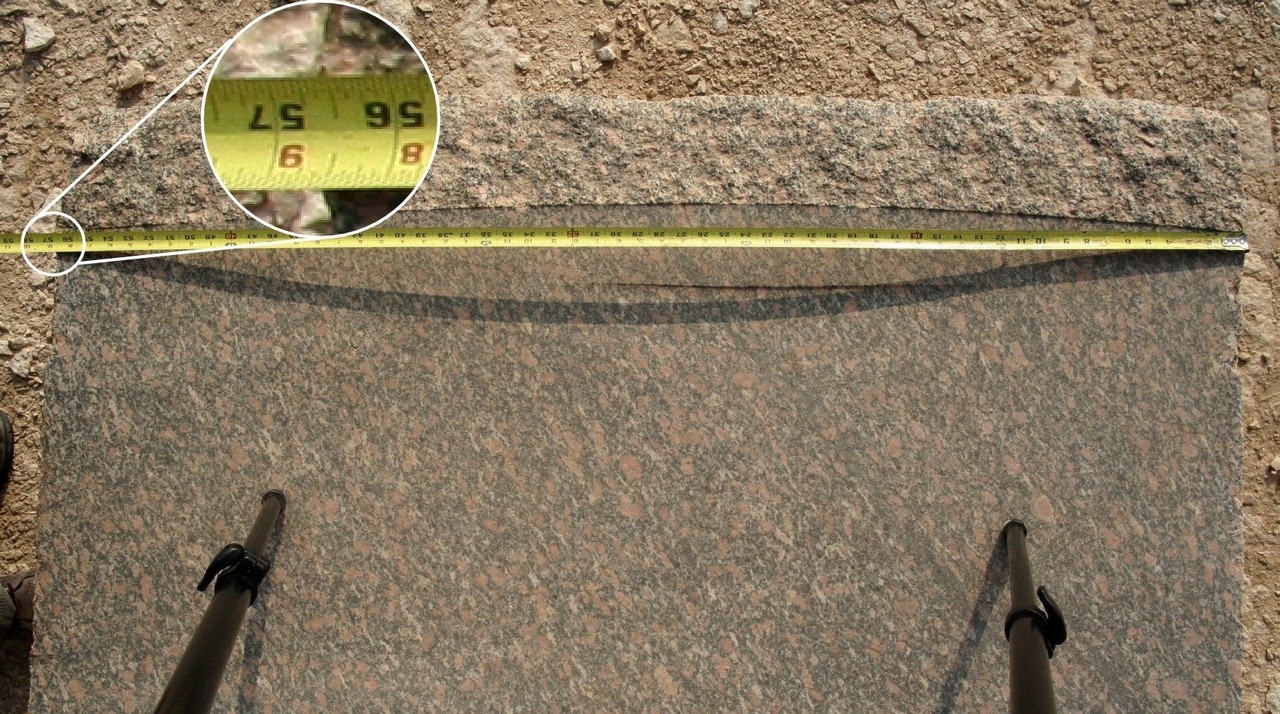
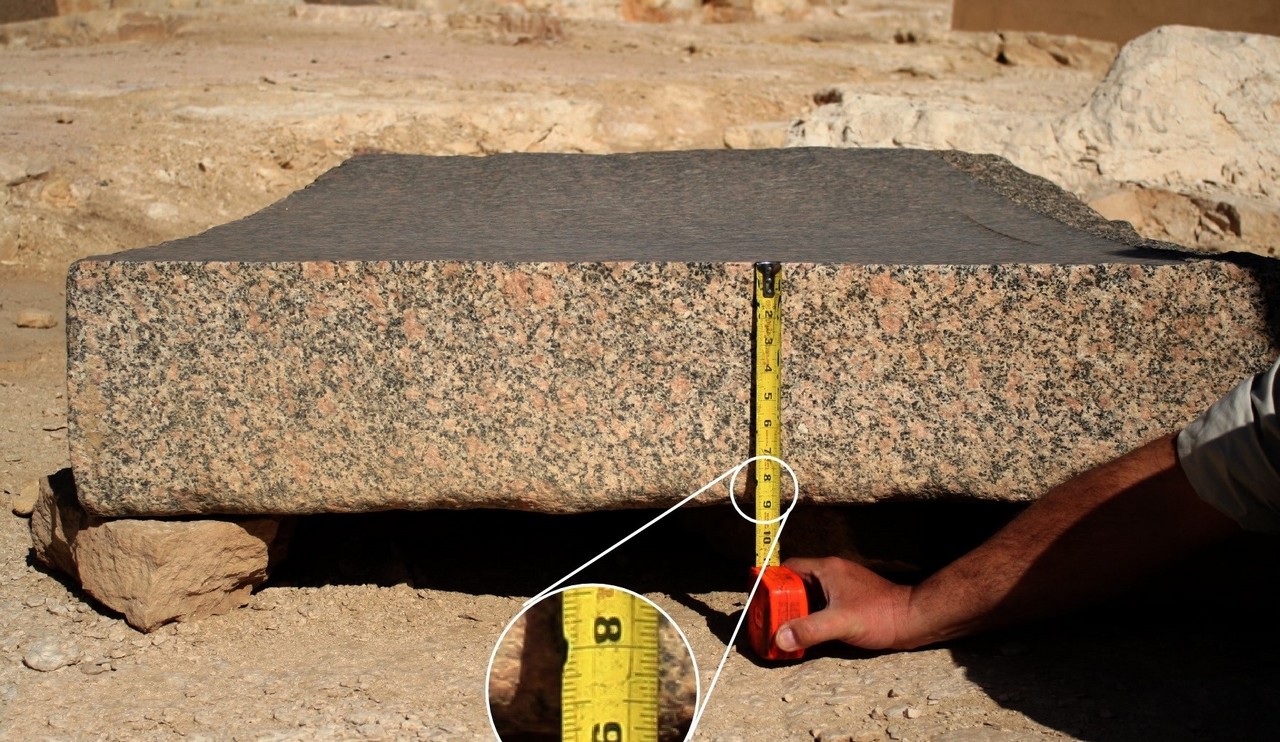
Interestingly, this block shows a clear curved cut and striations which are more reminiscent of marks left by huge circular saws than bronze chisels or anything else that ancient Egyptians are said to have had. Upon closer inspection, the outer cut (incl. the striations, click here for a close up) seems to have been created using a disc-shaped tool with a diameter of 30-40 foot.
But not only that, the surface of the granite slab is also "concave", meaning that the cut is not only curved in two dimensions but also in "depth". This is quite an accomplishment given the simple tools that were allegedly used to shape these kinds of blocks. Click here for an image with a superimposed blade matching the required diameter to achieve the circular cut that can be seen in the first image.
According to some people, this is what would have been required to get the result we see on the granite slab:
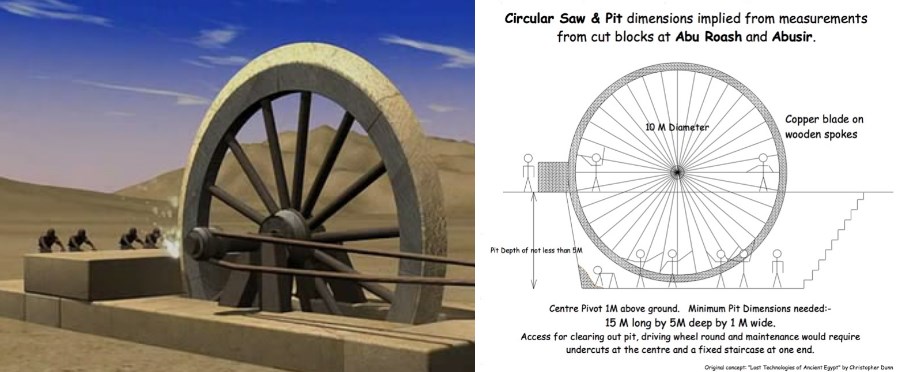 Large image
Large image
Click thumbnails below for additional images of the granite block:
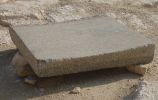

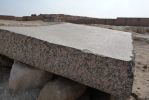
The most intriguing aspect of this story, however, is that today's Egyptologists don't entertain the possibility that such a tool even existed despite the obvious tool marks that suggest otherwise. The striations are consistent with marks in other ancient Egyptian artifcats (eg. holes drilled in granite). That circular saws were most probably used, was already noticed by Flinders Petrie, the founding father of modern Egyptology. He wrote about similar tool marks, although in a different material, in one of his well-known publications from 1883:
As we can see, the granite slab mentioned in the introduction is only one of several such artifacts found at various ancient Egyptian sites. Another interesting example located nearby can be found here.
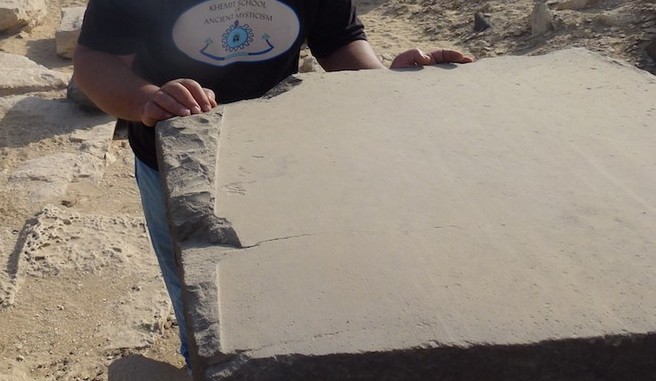
So where is this tool that shouldn't exist? A possible answer would be that, if it indeed existed, it would probably have decayed over time and somehow we're not able to find any traces of its existence nor the infrastructure that supported it (unless you count the boat pits found nearby as actual saw pits used to mount the huge blades). On the other hand, whoever used such a tool would certainly have made sure not to leave it behind and store it safely at a location yet to be discovered.
Alternatives: Chisel on a string? Pounding balls? Bent copper saws?
Given the unique geometry of this particular artifact, it seems unlikely that any of the proposed traditional methods would have been up to the task. It's possible that experimental archaeologist Denys Stocks (expert in Egpytian stoneworking methods) may have written something about it in his work "Ancient Egyptian Granite Working Methods in Aswan Upper Egypt" but I couldn't access the document since it seems to be behind a paywall.
So why does Egyptology not allow circular saws to have been part of the ancient Egyptian toolbox? Is it because whoever has circular saws would probably also have invented the wheel (which they of course weren't supposed to have)? Pulleys, maybe... but wheels or circular saws? No way.
Questions upon questions! The most important being: Where is this tool and who 'dunn' it (pun intended)?
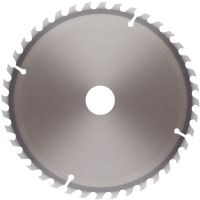
SOURCES AND LINKS:
------------------------------------------
01. Ancient Egyptian Technologies: Giant Circular Saws
02. Advanced Engineering in the Temples of the Pharaohs
03. The Pyramids And Temples Of Gizeh by F. Petrie (PDF)
04. More about Abu Rawash and the Pyramid of Djedefre
05. Image Gallery: LAH Expedition 2011/Abu Rawash
06. Flinder Petrie: Comments on Mechanical Stoneworking Methods


Interestingly, this block shows a clear curved cut and striations which are more reminiscent of marks left by huge circular saws than bronze chisels or anything else that ancient Egyptians are said to have had. Upon closer inspection, the outer cut (incl. the striations, click here for a close up) seems to have been created using a disc-shaped tool with a diameter of 30-40 foot.
But not only that, the surface of the granite slab is also "concave", meaning that the cut is not only curved in two dimensions but also in "depth". This is quite an accomplishment given the simple tools that were allegedly used to shape these kinds of blocks. Click here for an image with a superimposed blade matching the required diameter to achieve the circular cut that can be seen in the first image.
According to some people, this is what would have been required to get the result we see on the granite slab:

Click thumbnails below for additional images of the granite block:



The most intriguing aspect of this story, however, is that today's Egyptologists don't entertain the possibility that such a tool even existed despite the obvious tool marks that suggest otherwise. The striations are consistent with marks in other ancient Egyptian artifcats (eg. holes drilled in granite). That circular saws were most probably used, was already noticed by Flinders Petrie, the founding father of modern Egyptology. He wrote about similar tool marks, although in a different material, in one of his well-known publications from 1883:
The Pyramids And Temples Of Gizeh (p. 76)
No. 6, a slice of diorite bearing equidistant and regular grooves of circular arcs, parallel to one another; these grooves have been nearly polished out by crossed grinding, but still are visible. The only feasible explanation of this piece is that it was produced by a circular saw.
As we can see, the granite slab mentioned in the introduction is only one of several such artifacts found at various ancient Egyptian sites. Another interesting example located nearby can be found here.

So where is this tool that shouldn't exist? A possible answer would be that, if it indeed existed, it would probably have decayed over time and somehow we're not able to find any traces of its existence nor the infrastructure that supported it (unless you count the boat pits found nearby as actual saw pits used to mount the huge blades). On the other hand, whoever used such a tool would certainly have made sure not to leave it behind and store it safely at a location yet to be discovered.
Alternatives: Chisel on a string? Pounding balls? Bent copper saws?
Given the unique geometry of this particular artifact, it seems unlikely that any of the proposed traditional methods would have been up to the task. It's possible that experimental archaeologist Denys Stocks (expert in Egpytian stoneworking methods) may have written something about it in his work "Ancient Egyptian Granite Working Methods in Aswan Upper Egypt" but I couldn't access the document since it seems to be behind a paywall.
So why does Egyptology not allow circular saws to have been part of the ancient Egyptian toolbox? Is it because whoever has circular saws would probably also have invented the wheel (which they of course weren't supposed to have)? Pulleys, maybe... but wheels or circular saws? No way.
Questions upon questions! The most important being: Where is this tool and who 'dunn' it (pun intended)?

SOURCES AND LINKS:
------------------------------------------
01. Ancient Egyptian Technologies: Giant Circular Saws
02. Advanced Engineering in the Temples of the Pharaohs
03. The Pyramids And Temples Of Gizeh by F. Petrie (PDF)
04. More about Abu Rawash and the Pyramid of Djedefre
05. Image Gallery: LAH Expedition 2011/Abu Rawash
06. Flinder Petrie: Comments on Mechanical Stoneworking Methods
edit on 19-3-2017 by jeep3r because: text
jeep3r
First of all I would like to thank you for the well written and thought out thread. I have always been interested in how they cut stones with such precision. And have wondered if they used light or sound to do it with as we haven't found any traditional tools (that I'm aware of) that would/could do it. A couple of videos I found that may explain what I'm on about a bit better...
1. The Granite Box
Might want to turn down the volume..the music is a bit much in this 3 minute video. But the Granite Box (if it hasn't been debunked) is quite interesting..
2. Melt stone with light and sound (some swearing in this video..just a fair warning..lol)
This video offers up 16 minutes of some light/sound experimentation...how they would cut through granite/stone with such technology. And some additional interesting information at the end.
Hopefully it is ok for me to link these ..and thanks again for bringing this subject back up. Always interesting to hear new thoughts or information on it.
Thanks,
blend57
First of all I would like to thank you for the well written and thought out thread. I have always been interested in how they cut stones with such precision. And have wondered if they used light or sound to do it with as we haven't found any traditional tools (that I'm aware of) that would/could do it. A couple of videos I found that may explain what I'm on about a bit better...
1. The Granite Box
Might want to turn down the volume..the music is a bit much in this 3 minute video. But the Granite Box (if it hasn't been debunked) is quite interesting..
2. Melt stone with light and sound (some swearing in this video..just a fair warning..lol)
This video offers up 16 minutes of some light/sound experimentation...how they would cut through granite/stone with such technology. And some additional interesting information at the end.
Hopefully it is ok for me to link these ..and thanks again for bringing this subject back up. Always interesting to hear new thoughts or information on it.
Thanks,
blend57
edit on 19-3-2017 by blend57 because: always an edit...
There is a lot of evidence of discs cutting rock all over the world. There hasn't been a disk found though so archeologists can't state that they
used big circular saw blades to cut the rock. But the cuts are evidence that it occurred. It did not have to be a full circle though, a swinging
half moon pendulum style cutter would make the same arc. You can swing a spoon and dig a circular hole in the ground. it could also be a spinning
cross shaped cutter with four bits too. The arc is the important evidence, many different tool technologies could accomplish this.
These are not isolated incidents, I read of many of these cut marks in different places all over the world in my studies, I saw many pictures and I used saws to cut stone and can verify that the pattern present do match a saw pattern. Also they were using wires to cut rock thousands of years ago, I heard that from my Mason, and there is evidence of wire cutting of rocks too. Two guys on opposite sides pulling on an abrasive wire of some kind long ago in Italy. That leaves a straight cut though.
These are not isolated incidents, I read of many of these cut marks in different places all over the world in my studies, I saw many pictures and I used saws to cut stone and can verify that the pattern present do match a saw pattern. Also they were using wires to cut rock thousands of years ago, I heard that from my Mason, and there is evidence of wire cutting of rocks too. Two guys on opposite sides pulling on an abrasive wire of some kind long ago in Italy. That leaves a straight cut though.
a reply to: Aeshma
They did use it for chariots later on:
en.wikipedia.org...
The reason why I'm mentioning the wheel/round-saw connection is obviously the similar functionality. One would assume they knew very well about it, otherwise it would be quite a coincidence for them to come up with the design for the tri-lobed disc, for example.

They did use it for chariots later on:
en.wikipedia.org...
The reason why I'm mentioning the wheel/round-saw connection is obviously the similar functionality. One would assume they knew very well about it, otherwise it would be quite a coincidence for them to come up with the design for the tri-lobed disc, for example.

Perhaps, when the Romans arrived, they took the cutters back home?
You toss a bunch of rough rocks into a tumbler, add some sand, and water and they will come out smooth.
All you need is a bunch of rocks, time, some sand, water, a little elbow grease and you can easily get a fine finish. The curve in the piece can be easily explained by that.
Sometimes the easiest explanation is the most plausible.
All you need is a bunch of rocks, time, some sand, water, a little elbow grease and you can easily get a fine finish. The curve in the piece can be easily explained by that.
Sometimes the easiest explanation is the most plausible.
a reply to: Neith
Your avatar name gave it away for me, lol. Neith is my main in "Smite".
I was always interesting in that "lotus" disc or fan...whatever you want to call it. I always attributed it to as some sort of industrial fan.
The marks in stones have always intrigued me and I often wonder myself what those are.
Your avatar name gave it away for me, lol. Neith is my main in "Smite".
I was always interesting in that "lotus" disc or fan...whatever you want to call it. I always attributed it to as some sort of industrial fan.
The marks in stones have always intrigued me and I often wonder myself what those are.
edit on 19-3-2017 by Arnie123 because: Beef up
originally posted by: jeep3r
a reply to: strongfp
The striations don't look like they resulted from using such a method. And how would this explain the concave geometry (not to mention the scale and dimension of this block)?
And imperfection means that it had errors somewhere along the way.
Something that large and a slab like that may have never been 'finished'.
It's quite easy to understand that someone rolling or scratching / sanding a surface for long periods of time could get a concave or even convex outcome. A perfect 'flat' surface would be easily achieved with a straight saw blade, so why was it flawed?
Because it was probably done by hand, with another rock and some water. Let water soak into any stone or rock and it'll become saturated and weak. Just like adding heat to anything will excite the atoms and make it unstable and easily fall apart or bend or melt.
There's a man called Brien Foerster who has some pretty plausible theories about this subject.
Brien Foerster youtube channel - must watch
a reply to: jeep3r
Brien Foerster youtube channel - must watch
a reply to: jeep3r
edit on 19-3-2017 by 2Faced because: (no reason given)
originally posted by: strongfp
Because it was probably done by hand, with another rock and some water. Let water soak into any stone or rock and it'll become saturated and weak. Just like adding heat to anything will excite the atoms and make it unstable and easily fall apart or bend or melt.
Just to illustrate the concave geometry from a different angle, here's the slab from the side:
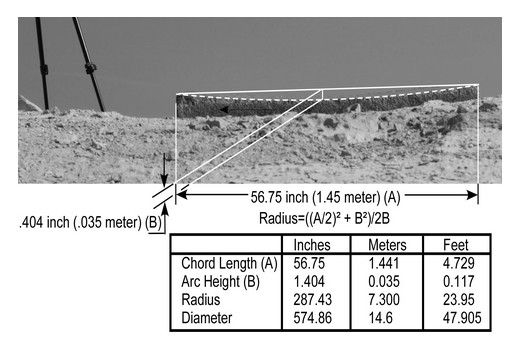
It would seem extraordinarily difficult to use pounding stones or other manually operated tools for achieving this radius. Quarz sand could be used as an abrasive to actually affect the stone to some extent, but (as is the case with AE drill holes) it is likely that the grooves would then look a lot different.
edit on 19-3-2017 by jeep3r because: text
a reply to: jeep3r
Bottom line is. The concave nature of this slab did not come from a straight saw.
Something like that could easily be made with a pendulum and a roller. Who knows.
But it was not something made of metal.
I work with metal everyday, even just something as simple as 80ksi on 100ksi makes a huge difference.
I doubt the Egyptians knew much about metallurgy to make compound mild steels and alloys beyond what they had readily available.
Copper and bronze would just simply flake, dent, etc on stone like that.
Bottom line is. The concave nature of this slab did not come from a straight saw.
Something like that could easily be made with a pendulum and a roller. Who knows.
But it was not something made of metal.
I work with metal everyday, even just something as simple as 80ksi on 100ksi makes a huge difference.
I doubt the Egyptians knew much about metallurgy to make compound mild steels and alloys beyond what they had readily available.
Copper and bronze would just simply flake, dent, etc on stone like that.
a reply to: strongfp
If it was caused by a metal tool, it would probably have been equipped with a jewel-tipped blade:
No matter from which angle we look at it, there seem to be problems of one kind or another. It's difficult to explain this artifact.
If it was caused by a metal tool, it would probably have been equipped with a jewel-tipped blade:
F. Petrie: Mechanical Methods of the Pyramid Builders
And when we find on the surfaces of the saw-cuts in diorite, grooves as deep as 1/100 inch, it appears far more likely that such were produced by fixed jewel points in the saw, than by any fortuitous rubbing about of a loose powder.
No matter from which angle we look at it, there seem to be problems of one kind or another. It's difficult to explain this artifact.
a reply to: jeep3r
pretty soon all the resident archaeological main streamers will be by here to give you a proper spanking for speaking such blasphemy about the builders of the pyramid and their tools and techniques used in building of the pyramids.
pretty soon all the resident archaeological main streamers will be by here to give you a proper spanking for speaking such blasphemy about the builders of the pyramid and their tools and techniques used in building of the pyramids.
edit on 19-3-2017 by
hounddoghowlie because: (no reason given)
a reply to: jeep3r
I've had to drill tiny holes in a 2 inch thick piece of granite....Two holes took me two days. Cutting that much is an impressive featregardless of the technology. That's they did this so long ago is even more so.
I've had to drill tiny holes in a 2 inch thick piece of granite....Two holes took me two days. Cutting that much is an impressive featregardless of the technology. That's they did this so long ago is even more so.
edit on 19-3-2017 by pavil because: (no reason given)
new topics
-
Weinstein's conviction overturned
Mainstream News: 10 minutes ago -
Supreme Court Oral Arguments 4.25.2024 - Are PRESIDENTS IMMUNE From Later Being Prosecuted.
Above Politics: 1 hours ago -
Krystalnacht on today's most elite Universities?
Social Issues and Civil Unrest: 1 hours ago -
Chris Christie Wishes Death Upon Trump and Ramaswamy
Politicians & People: 2 hours ago -
University of Texas Instantly Shuts Down Anti Israel Protests
Education and Media: 4 hours ago -
Any one suspicious of fever promotions events, major investor Goldman Sachs card only.
The Gray Area: 6 hours ago -
God's Righteousness is Greater than Our Wrath
Religion, Faith, And Theology: 11 hours ago
top topics
-
VP's Secret Service agent brawls with other agents at Andrews
Mainstream News: 15 hours ago, 11 flags -
Nearly 70% Of Americans Want Talks To End War In Ukraine
Political Issues: 16 hours ago, 6 flags -
Sunak spinning the sickness figures
Other Current Events: 16 hours ago, 5 flags -
Krystalnacht on today's most elite Universities?
Social Issues and Civil Unrest: 1 hours ago, 5 flags -
Electrical tricks for saving money
Education and Media: 14 hours ago, 4 flags -
Supreme Court Oral Arguments 4.25.2024 - Are PRESIDENTS IMMUNE From Later Being Prosecuted.
Above Politics: 1 hours ago, 4 flags -
Weinstein's conviction overturned
Mainstream News: 10 minutes ago, 3 flags -
University of Texas Instantly Shuts Down Anti Israel Protests
Education and Media: 4 hours ago, 2 flags -
Any one suspicious of fever promotions events, major investor Goldman Sachs card only.
The Gray Area: 6 hours ago, 2 flags -
Chris Christie Wishes Death Upon Trump and Ramaswamy
Politicians & People: 2 hours ago, 1 flags
active topics
-
President BIDEN Vows to Make Americans Pay More Federal Taxes in 2025 - Political Suicide.
2024 Elections • 144 • : underpass61 -
University of Texas Instantly Shuts Down Anti Israel Protests
Education and Media • 95 • : CriticalStinker -
-@TH3WH17ERABB17- -Q- ---TIME TO SHOW THE WORLD--- -Part- --44--
Dissecting Disinformation • 665 • : 777Vader -
Supreme Court Oral Arguments 4.25.2024 - Are PRESIDENTS IMMUNE From Later Being Prosecuted.
Above Politics • 10 • : Vermilion -
Sunak spinning the sickness figures
Other Current Events • 19 • : Freeborn -
Weinstein's conviction overturned
Mainstream News • 6 • : SchrodingersRat -
Candidate TRUMP Now Has Crazy Judge JUAN MERCHAN After Him - The Stormy Daniels Hush-Money Case.
Political Conspiracies • 746 • : matafuchs -
Chris Christie Wishes Death Upon Trump and Ramaswamy
Politicians & People • 7 • : underpass61 -
SETI chief says US has no evidence for alien technology. 'And we never have'
Aliens and UFOs • 65 • : andy06shake -
British TV Presenter Refuses To Use Guest's Preferred Pronouns
Education and Media • 155 • : Annee
